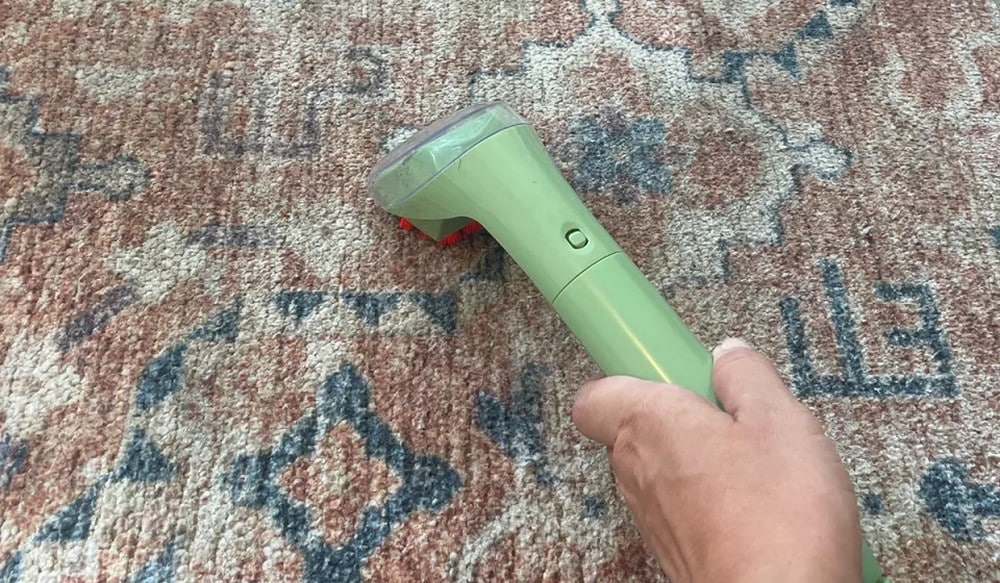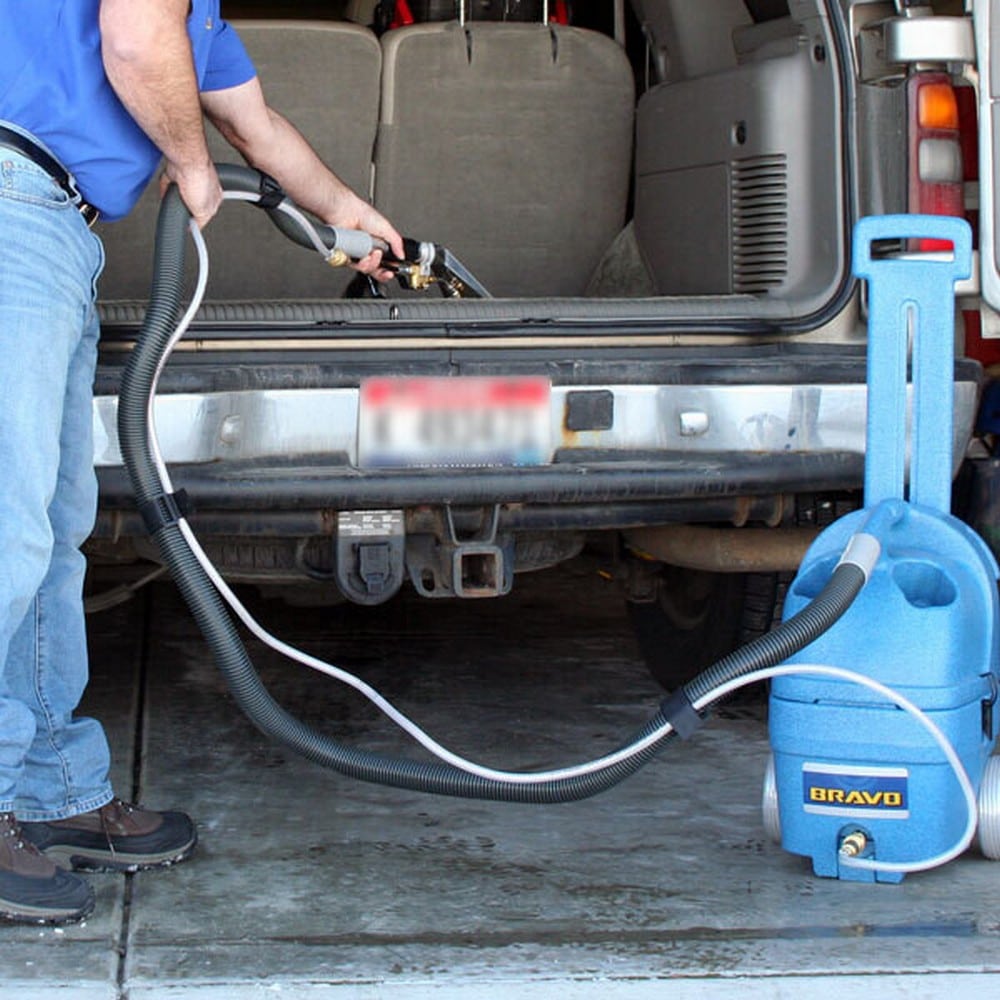
Spotted a stubborn stain on your carpet and unsure how to handle it? You’ve come to the right place.
In this guide, we’ll walk you through the process of deep carpet cleaning using carpet extractors. We’ll dive into what these machines do, highlight their benefits, and elaborate on the various methods of use.
Whether you’re trying to decide between a heated or non-heated extractor or looking for a step-by-step guide for using a carpet extractor, we’re here to help.
Unraveling Carpet Extractors
Carpet extractors are robust cleaning machines specifically designed for deep cleaning of carpets and furniture coverings.
These machines shouldn’t be confused with your standard vacuum cleaners or smaller carpet cleaners. Instead, they use a mixture of high-pressure water and specific cleaning formulas to deeply remove stubborn dirt and stains.
What sets these machines apart is their impressive suction power. This means they not only extract dirt but also pull out the used cleaning solution. The result is a less damp carpet that dries quicker, speeding up the overall stain removal process.
Overall, if you’re battling stubborn stains on your carpet, a carpet extractor can make the task significantly easier and more efficient, offering a superior solution compared to manual cleaning methods.
Heated Vs. Non-Heated Extractors
Choosing between heated and non-heated extractors for carpet cleaning depends on your personal requirements and budget.
Heated extractors have a built-in heating element, which can effectively loosen tough stains, outperforming traditional manual cleaning. However, these enhanced capabilities generally mean a higher price tag.
On the flip side, if you’re on a tight budget, non-heated extractors could be your best bet. While these machines don’t have a heating function, they offer a large tank and a hose, ensuring a good cleaning job.
Even without the heating component, you can still achieve effective cleaning results with non-heated extractors by adding hot water.
So, consider your carpet cleaning needs and select the option that works best for you.

Deep Extraction Techniques For Fresh Car Carpets: A Step-By-Step Guide
Boosting the efficiency of carpet extractors can ramp up your cleaning results. Here’s an easy-to-follow guide:
Step 1: The first move is preparing the site.
- Do a sweep of any visible rubbish and remove floor mats. It’s better to give the carpet a good vacuum to suck up any dry dirt.
- If there are any spots or stains, take care of them with an appropriate cleaner.
- Give the dirtier spots an extra dose of treatment with a pre-spray solution but remember to allow it enough time to do its job.
Step 2: Now comes the extraction stage.
- Operate the extractor in a slow, careful manner using a crisscross, grid-like pattern.
- A hot solution or steam can work wonders in getting rid of the stuff you don’t want. For those dirty patches, you might need to do a couple of extra extractions or just rinse with pure water.
- After the extraction, mop up any leftover wetness with suction-only movements.
- Finally, give the carpet fibers a careful comb through.
Timely extraction is crucial to prevent damaging particulates from becoming ground into carpet fibers.
Step 3: Perform regular extraction to maintain the appearance of carpeting and prevent soil buildup.
- Apply carpet protectant to prolong the cleanliness of the carpet and enhance its longevity.
The Extraction Process Explained
Here’s a simple break-down of the carpet extraction process:
- Slow, Grid-like Cleaning: For thorough carpet cleaning, it’s best to move the extractor slowly and in a grid pattern. This method involves overlapping strokes to cover all areas of the carpet.
- Use of Heat: Employing steam or hot cleaning solutions is a proven way to get out stubborn stains and unwelcome matter lodged in the carpet.
- Deep Cleaning Approach: When dealing with highly dirty areas, you may need to run the extraction process multiple times or use water-only rinses to ensure deep cleaning. To help reduce dampness, use the extractor’s suction feature without water, that way you can pull out more moisture.
Using these extraction methods, you can effectively get rid of dirt, stains, and any other unwanted stuff from your carpets. After you’re done, make sure to groom the carpet fibers to help them dry evenly and maintain a neat appearance.
Remember these tips, and you’ll get much better results from your carpet cleaning efforts.
Maximizing Carpet Extraction With Carpet Protectants
Adding a carpet protectant to your cleaning routine is a smart move since it can cut down on how often you have to clean.
Think of carpet protectant as an extra shield for your carpet. When you use it, it helps to stop your carpet from getting dirty again straight away, keeps it looking clean for longer, and provides a protective layer against future messes.
Using a carpet protectant not only makes your carpet last longer but also saves you some elbow grease in the long run.
Thanks to the defense provided by carpet protectants, your carpets get to stay looking nice and fresh for extended periods. This ensures a cleaner and more inviting environment for you, your family, or your friends.









